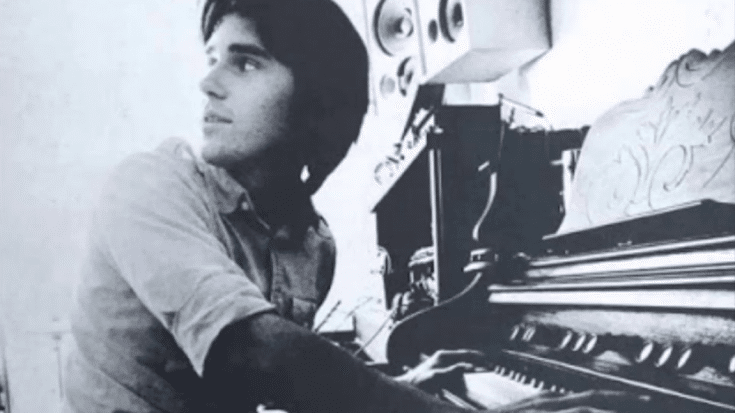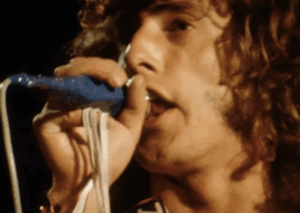10 Great Albums Recorded by Classic Artists as One-Man Bands

via Carlos Renato Lopes / YouTube
There’s a special kind of magic that happens when an artist decides to create an album all by themselves. It’s a deep dive into their creative mind, showing off not just their songwriting abilities, but also their multiple musical talents. These albums have a unique flair, as they capture the essence of the musicians in their purest form. They are the band leader, the drummer, the guitarist, and even the singer, all wrapped into one.
John Fogerty – Centerfield (1985)
John Fogerty found a fresh spark of creativity in his solo record “Centerfield,” his first chart-topping album since his days with Creedence Clearwater Revival. The tunes on this album feel like they could have been blaring out of an AM radio back in rock’s golden era, with “Rock and Roll Girls” and the nostalgic title track leading the charge. Fogerty cleverly utilized his demos to guide the recording process, managing to keep costs impressively low at $35,000, showing that big budgets aren’t required for high-quality music.
Roy Wood – Boulders (1973)
Roy Wood, known for his role in forming The Move and Electric Light Orchestra, flexed his pop muscles with his own record “Boulders.” Songs like “Songs of Praise” and “Wake Up” showed that Wood could mix catchy tunes with his quirky style. He dove headlong into a blend of humor and clever studio techniques. “Boulders” is the sound of an artist thoroughly enjoying the freedom of a solo adventure in the studio.
Skip Spence – Oar (1969)
Skip Spence’s “Oar” has grown in appreciation over the years, much like the work of Syd Barrett. The album was written during a particularly tough period in Spence’s life and embodies a raw, emotional honesty. Recording alone, Spence’s talents shine through on tracks like “Little Hands” and “Broken Heart.” While it was the only official solo album he released, it’s filled with potential, making us ponder on what could have been had he continued down this road.
Mike Oldfield – Tubular Bells (1973)
At just 19, Mike Oldfield composed and almost entirely performed “Tubular Bells” by himself. His work became a sprawling 50-minute piece that bridged rock, classical music, and folk traditions from the UK and Ireland. The album didn’t just offer a haunting soundtrack for “The Exorcist” but also put Richard Branson’s Virgin Records on the map. This album is not just a collection of sounds, but a daring leap by a young artist into uncharted musical territories.
Steve Winwood – Arc of a Diver (1980)
Steve Winwood was on the verge of stepping away from music altogether before “Arc of a Diver” rekindled his enthusiasm. Produced in his own countryside home, each song on this album wraps Winwood’s soulful voice in smooth rhythms and inviting soundscapes. Hits like “While You See a Chance,” along with “Night Train” and “Dust,” cleared the path for Winwood’s later success and a prominent spot on music television channels.
Foo Fighters – Foo Fighters (1995)
Dave Grohl was already collecting song ideas during his time with Nirvana, but it wasn’t until after the band ended that these ideas came into the light with Foo Fighters’ self-titled album. Tracks such as “This is a Call” and “I’ll Stick Around” became anthems in their own right. After the album’s release, Grohl chose a more subdued publicity approach, possibly out of respect for his late bandmate Kurt Cobain. The album went on to earn a Grammy nomination, a sign of Grohl’s continuing influence on the rock scene.
Prince – Dirty Mind (1980)
“Dirty Mind,” released several years before Prince skyrocketed with the “Purple Rain” soundtrack, packed a punch with its blend of R&B and scandalous themes. It showcased Prince’s incredible handle on studio production and songwriting. With tracks like “Head” and “Uptown,” Prince explored the sounds that would come to define much of his career, laying the groundwork for his future works.
Emitt Rhodes – Emitt Rhodes (1970)
Emitt Rhodes might not be a name everyone knows, but his self-titled album has been a beacon for independent artists everywhere. Released the same year as Paul McCartney’s own solo debut, Rhodes’ album gleams with lively tunes and inventive hooks that stood shoulder to shoulder with McCartney’s work. His music got a boost when “Lullabye” was picked for the soundtrack of “The Royal Tenenbaums,” a movie that came out three decades after his album.
Todd Rundgren – Hermit of Mink Hollow (1978)
In “Hermit of Mink Hollow,” Todd Rundgren returned to the catchy pop vibe of his earlier albums, such as “Todd” and “Something/Anything?” However, the latter was almost a one-man project in itself. Created after parting ways with Bebe Buell, Rundgren crafted music that was both accessible and deeply personal. A record executive’s suggestion to split the album into “Easy” and “Difficult” sides led to a unique presentation of the tunes, including “Can We Still Be Friends” and “All the Children Sing.”
Paul McCartney – McCartney (1970)
Paul McCartney took a step away from the high expectations following The Beatles to produce “McCartney,” an album that embraces simplicity and endearing charm. Doing most of the work in his home studio, McCartney’s genius is on full display with tracks like “Maybe I’m Amazed” and “Every Night,” timeless pieces that still sparkle with their initial grace and elegance. It’s an album that allows McCartney to shine in a raw, unfiltered light.













